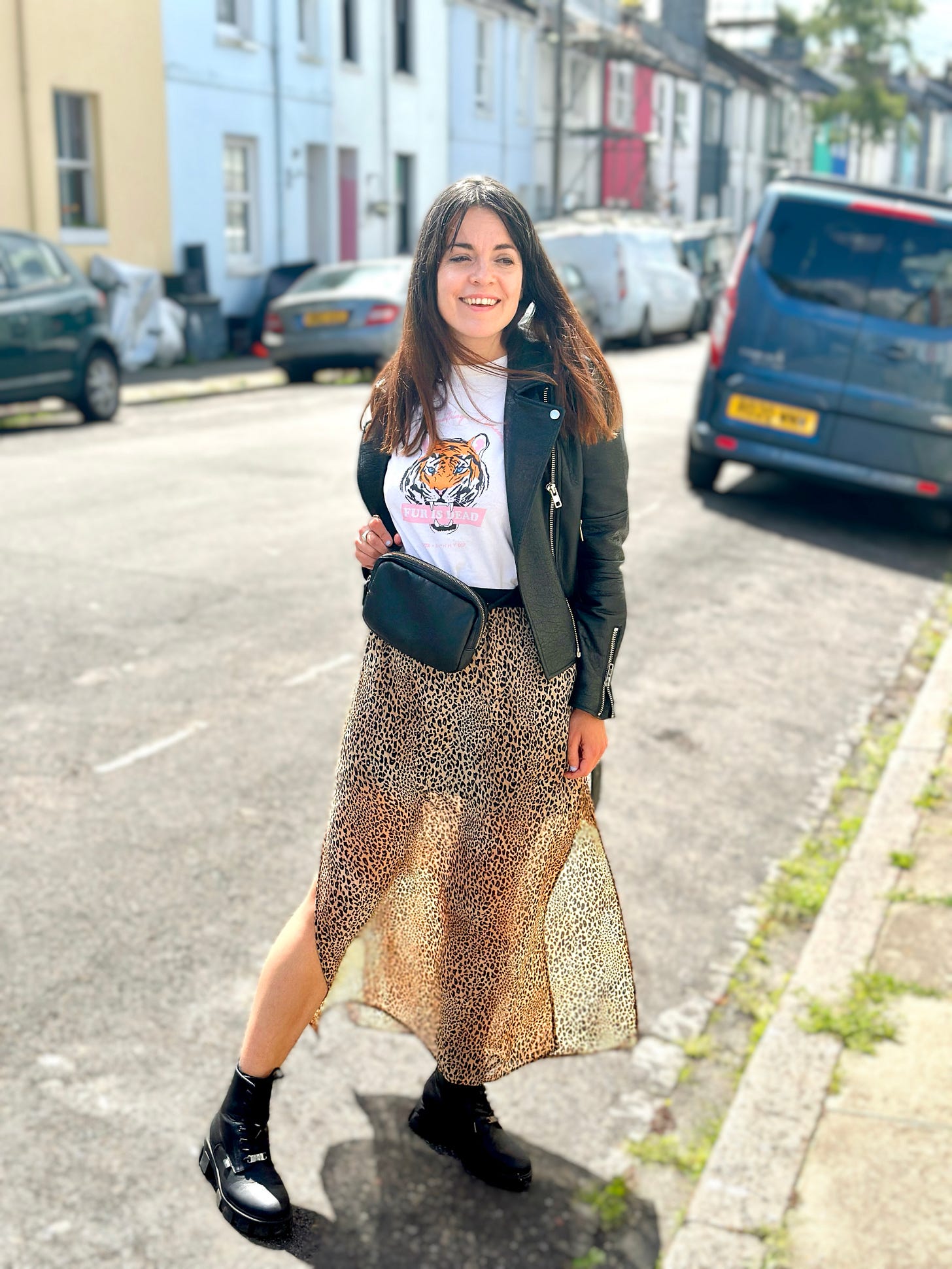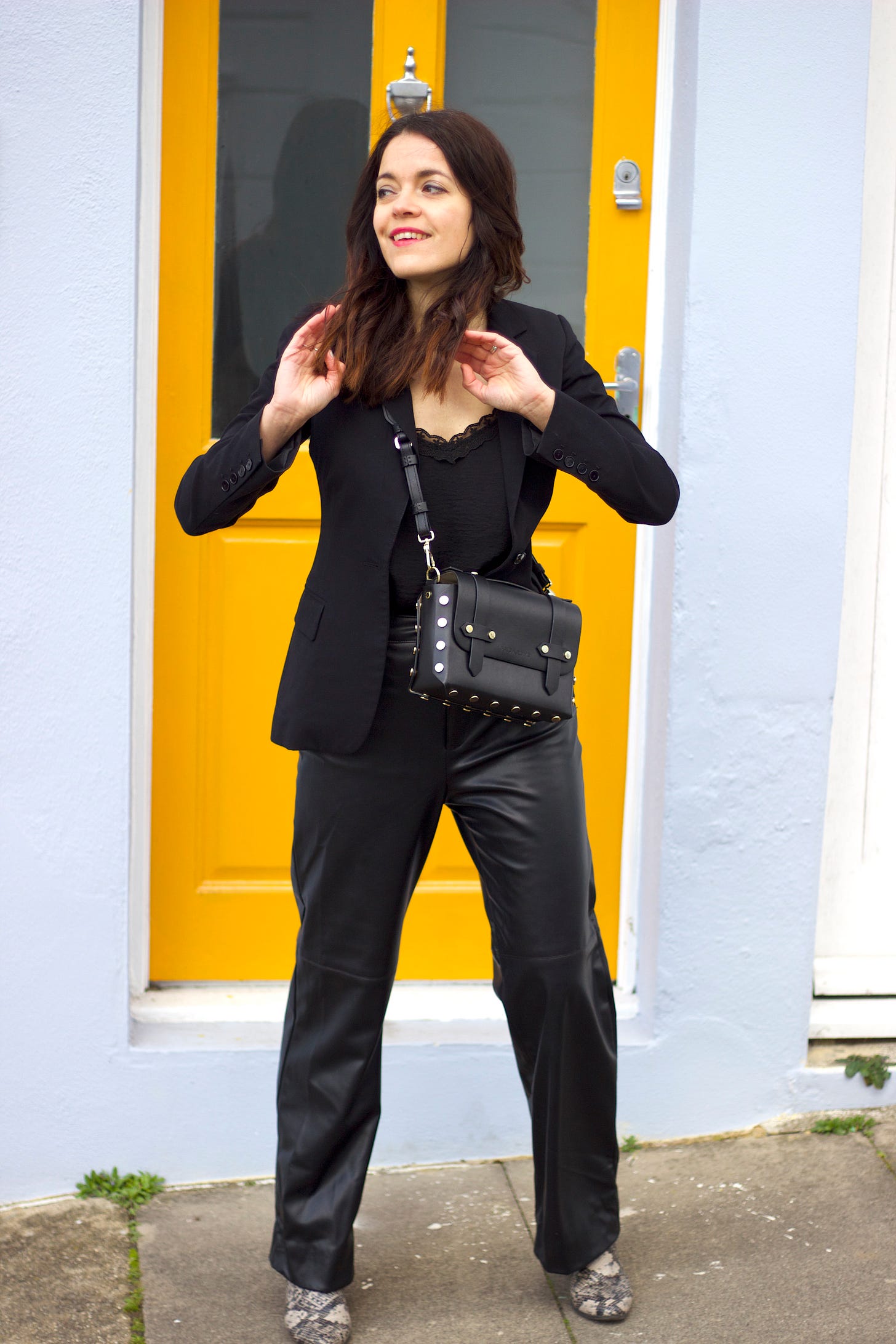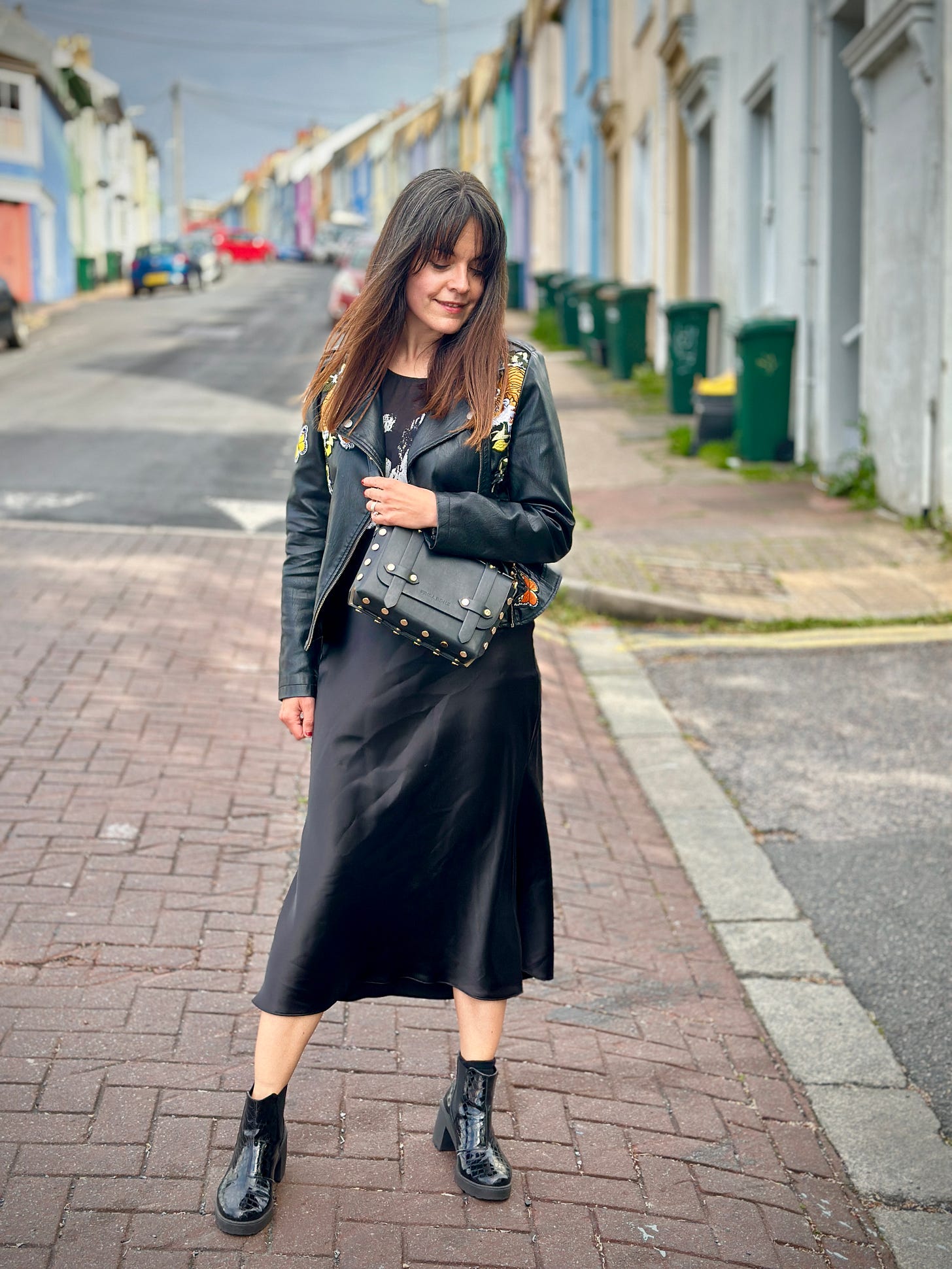Why Finding Your Personal Style is Good for the Environment
Look chic and help the planet.
If you like listening more than reading, this post is adapted from an episode of my podcast Catwalk Rebel. This post contains affiliate links.
Finding your personal style is it these days. Since everyone’s favourite stylist
released her book Wear It Well (which I read and really enjoyed), fashionistas everywhere have been chiselling their three style words and nailing down their personal style. What does that have to do with sustainability? Quite a lot, actually.Firstly, the waste generated by the fashion industry is shocking. The equivalent of one garbage truck of textiles is burned or sent to landfill every second, as a result to our overconsumption of fashion. To keep up with the constant cycle of micro-trends, some clothing chains now release over 50 collections every year, meaning that our hunger for the new is constantly growing. So we are producing staggering quantities of textiles…a lot of which will end up discarded.

This also creates insecurity and anxiety about our style and the way we dress. Every time there is a “new season” in fashion (which today is every few weeks) magazine headlines scream about all the “must-have new styles to add to your wardrobe” without any thought to all the items we added to our wardrobes last season, and where they will end up as more of these “must-haves” get added to our already overflowing wardrobes. On the flip side of this, there's also the proclaiming that “this style is out”, and “that design is dead” , which leads to feeling like you're not quite right unless you're wearing the exact thing.
Finding your personal style is an antidote to this – knowing who you are, what you like and what you feel good in eliminates the desire to chase trends. It limits impulse purchases and helps you separate the things you will actually wear from those you may get rid of in a few months. It streamlines your shopping process, makes choosing clothes easier, and guarantees that you feel great about what you are wearing every day.
If all of that was not enough, it also helps limit your impact on the planet by ensuring that your textile-waste footprint remains low. By only buying what you love and will wear for years, you break the cycle of constantly throwing away clothing and adding to the growing pile of textiles that end up in landfill.
So how do you find your style?
For me personally, this was such a long process. It took many years of getting to know myself and distilling the feeling that I wanted my style to project. And I'm still refining that and working on it today. So here are some steps that helped me find my personal style – and they might be helpful to you too.
Step one: analyse your wardrobe. Go through your clothing and see what you actually use, and what you haven't worn in ages. Chances are, if you keep wearing the same thing, there's a reason for that. If you gravitate towards certain types of clothing, make a note of what they have in common. And conversely, if there are items that you haven't worn in a year then perhaps you are not very likely to wear them this year either – and once again, there's a reason.
Step two: analyse your life. I mention this in my book Vegan Style. It’s crucial to evaluate how your clothes fit into your life. I've had difficulties with this step. For example, I love a bit of a heel. It gives that elevation to my outfits that I'm obsessed with. But the thing is, my life is approximately 70% walking. I live in Brighton, an extremely walkable city. I'm a huge walker, I get my 10k steps in easy, and being in heels all the time just doesn't match this part of my lifestyle. So I've gone for low, chunkier heeled ankle boots and also added sneakers as well as flat boots such as vegan Dr Martens to my wardrobe. The way this reflects on my shopping is if I find a skirt, or dress or pair of trousers that only go with heels, I think about that because many, many days in my life I won't actually wear it. So analyse your life – what do you do on the daily? If you're in a job where you dress very formally, your wardrobe will have to reflect that. If you're a busy stay-at-home parent, your clothes will have to cater to that. So keep your lifestyle in mind.
Step three: Get inspired. This is the fun part. Scour Pinterest or Instagram for outfits you love and people whose style you admire (mine here!), then analyse your digital moodboards. What silhouettes stand out? Any colours that you prefer? If there is a specific aesthetic that dominates, keep that in mind when shopping. Also, this might be a good time to read a book. My favourite book on this topic, aside from Allison Bornstein’s, is The Curated Closet by Anuschka Rees. This book is a total game-changer. The author was a fast fashion addict - just like me - and had a wardrobe full of clothes but nothing to wear. To combat this, Anuschka created a system based on getting to know your fashion needs and wants in order to create a wardrobe and a style that works for you. It’s not about dressing for your “body type” or limiting yourself to specific style aesthetics, but more about finding what works for you. I could not recommend her book more.
Bonus tip: Also, take advice from fashion stylist (and committed vegan!) Kristine Kilty, who gave me a great hack for getting inspired: “Find a celebrity who has a similar body shape to you and whose style resonates with you. They are likely to be working with a stylist who puts the perfect outfits together for them. If you look closely at the images, you will see that they repeat certain silhouettes and wear similar styles of clothing that they know work for them. Save some images on your phone, identify what styles and colours they are wearing, then try to recreate some of those outfits for yourself. It’s a fun way to push yourself out of your comfort zone and try something new.”

Step four: Learn what doesn't work. This is as important as learning what you love, and this is actually in the book The Curated Closet as well. Make a list of styles, colours, aesthetics and elements that are not your style, in order to make it easier to avoid them. For me, funny enough, three things that I used to wear all the time at university are on this list today, and that's low-waist jeans, ballerina flats and most types of floral prints. This step will save you time on trying to figure out what will work and will skip you so many impulse purchases. Whenever you will come across something “trendy” that you know doesn't work for you, you'll know to leave it on the shelf. This will also make online shopping so much easier.
Step five: Widen your comfort zone. So this somewhat goes against what I just said, but hear me out. Leaving your fashion comfort zone can sometimes be invigorating and refreshing for your style. Going back again to my own wardrobe, I lived in skinny jeans for a really long time. Especially when fashion magazines started saying that "skinny jeans were “dead”, I held on to them even more (and well, well, well…). I saw it as a way of rebelling against fashion trends. I still have all those pairs in my wardrobe. But somewhere along the way, I decided to try boyfriend jeans, which became a catalyst for a process that led me to discovering my new favourite design which is high waist wide leg – as far a departure from skinny as you could possibly get. Now I pretty much live in my different-colour pairs of second-hand Zara Marines. So stepping out of your comfort zone can actually be hugely beneficial.

Step six: Narrow down. This is what Allison Bornstein’s three words are all about. It’s all about taking all the elements that you've found throughout this process and put them together to see your personal style more clearly. As Allison herself explains it, the first word is practical (realistic - what styles do you wear constantly?), the second one is aspirational (what vibe do you want to embody?), and the third one is emotional (how do you want to feel when wearing your clothes?).
To find out more about how to find your three words using Allison Bornstein’s method, check out this video from the awesome minimalist style coach Signe Hansen.
My three words today are:
SHARP - clean, unfussy, no frills, simplicity, uncomplicated
EDGY - rock n’roll, irreverent, toughened-up
ELEVATED - classic with a twist, simple but there’s always something to make it interesting
Bonus tip: A fun thing I’ve come up with is to do a tagline for your style, so that it's clear to you who you are fashion-wise. I remember an online vegan fashion marketplace had a rock n'roll chic style edit, and they described it as “look like you don't give a fuck, while giving a fuck”. Someone tagged me in it, saying“this is you” and I laughed because that's my whole fashion philosophy, and I had honed it to the point that someone would recognise that as “that's Sascha” and connect that type of style to me. So I'd describe my style as “grown-up rock n'roll.” That gives a clear idea of what my style is - edgy yet elevated - but also what it isn’t: frilly, romantic, sporty, whimsical etc.
Disclaimer: Does all this mean I never have bad purchases anymore? No, of course not – I got carried away just last week and ended up with some denim dungarees from Vinted that, in my husband’s words, “look great if you’re going fishing”. But it happens much less frequently than before. As a result, I pretty much never get rid of clothes anymore - I never throw anything out unless it's literally falling to pieces, in which case I take it to the textile recycling station close to my house. But by that stage, it's usually been around for years and I've created lots of amazing memories with it. So it's a total win-win – for my wardrobe as well as for the planet.
All photos by David Camilli


Such a great point! Finding your personal style means making mindful choices, avoiding fast fashion, and investing in pieces you truly love. Sustainable and stylish! 🌿
Love your style, love your gear Sascha. I'm a big fan of charity shops.... Hardly ever bought anything new in 60 years. During lockdowns the charity shops here in Nederland got stuffed to the doors. When they opened up again Every Item was just one Euro. I had to build a second wardrobe.... Set for life now. Found you via David Wiggins, wish you success, peace, Maurice